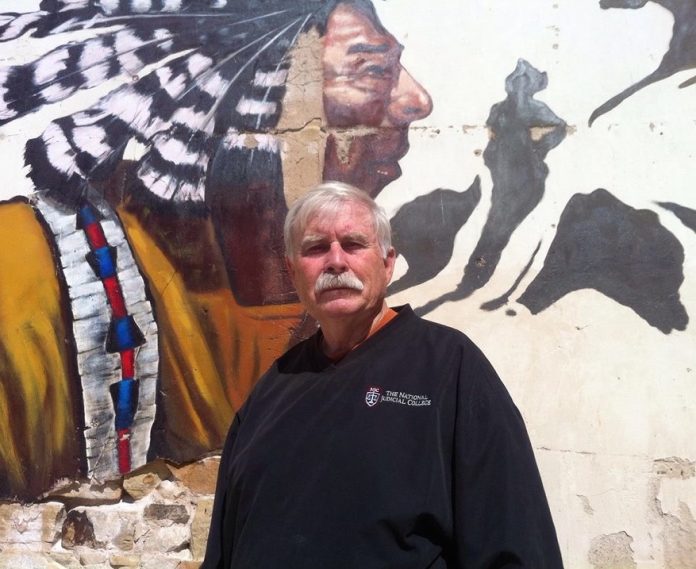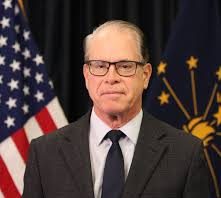BLACK HISTORY MONTH SPEECH OF 02/21/2010 RE-VISITED
GAVEL GAMUT Â By Jim Redwine
MONUMENTS MATTER, RE-VISITED
This article is a modification of a speech I gave on February 21, 2010, as the Judge of the Posey County, Indiana Circuit Court during Black History week. I am offering this version in support of the most recent efforts by Attorney and Posey County farmer Ben Uchitelle, Mt. Vernon High School student Sophie Kloppenburg, Posey County engineer and arborist Tom Guggenheim, University of Southern Indiana Associate Professor Kristalyn Marie Shefveland, Karen McBride Christensen of the Indiana Remembrance Coalition and others to establish a memorial to the victims of the autumn 1878 murders and pogrom of African Americans in Posey County, Indiana.
I was born and raised on the Osage Indian Nation in the state of Oklahoma at a time when Oklahoma legally segregated African Americans from the rest of us. They could not go to our schools, eat in our restaurants, sit downstairs in our movie theaters or even attend our white churches. My Native American friends were not kept separate from the white community by law, but their culture was systematically disrespected by the dominant white society.
Please stop and think for a moment about the communities of Posey County, Indiana, and Osage County, Oklahoma, which are representative of our entire country, and envision all of the important monuments erected to the memory of heroes and significant events. How many monuments can you think of that have been erected to African Americans or to Native Americans? Not so many, right? Let me assure you the same is true as for African Americans and Native Americans in most of America. Ironically, this is true as to Native Americans even in the state that bills itself as “Native Americaâ€. It is my opinion it is not a mere happenstance that there are few monuments to African and Native Americans in America, and especially in our nation’s capital. During this era of Black Lives Matter and Indigenous Peoples Day I would like to discuss with you why I believe, monuments matter.
History can quickly forget even the most horrendous tragedies. We humans have but scant time to complete our individual struggles. We are not prone to dwell for long on the misfortunes of others, especially if we ourselves or our ancestors contributed to those misfortunes.
It is not a coincidence that there is a memorial on our Capital Mall to the atrocities committed by Nazi foreigners in foreign lands, but no memorials to the holocausts the United States committed against Native Americans and African Americans in America.
As Jesus said, why do we search for the sins of others and ignore our own? That normal but inglorious human weakness is why monuments matter. Out of sight truly is soon out of mind and the facts of history are often changed to appease our nagging consciences. We need public admission and remembrance of our collective sins even more than we need public veneration of our heroes.Â
These truths are self-evident from the way we have conveniently and comfortably rewritten or left unwritten hundreds of years of our systematic destruction of Native American and African American cultures. Thanks to white Americans, the histories of both of these races are similar and inextricably intertwined.Â
And speaking of truth,
“We hold these truths to be self-evident, that all men are created equal, that they are endowed by their creator with certain unalienable rights, that among these are life, liberty and the pursuit of happiness.â€
Thomas Jefferson wrote those words in 1776. Thomas Jefferson owned many of his fellow human beings.
And, at the time fifty-six of our famous forefathers signed this Declaration of Independence, several of them owned their fellow human beings.Â
George Washington did not join Jefferson and the others in signing the Declaration of Independence, but Washington did join Jefferson in owning his fellow human beings.
Our United States Constitution took effect in 1789 and provided in Article IV, § 2 (3) that it was illegal to refuse to surrender an escaped slave to his or her owner. This provision was later made significantly more odious by the Fugitive Slave Act of 1850.
Our Constitution-based the number of each state’s congressional representatives on a census of all free persons and certain indentured servants, but excluded Native Americans and included only 3/5 of each slave (Article I, § 2).
Article I, § 9 provided that the importation of slaves (mainly from Africa) could not be legally stopped by Congress until 1808. And the lawful domestic breeding and trading of Negro slaves continued in parts of America until December 1865, eighty-nine years after the signing of the Declaration of Independence.
We have erected impressive monuments to Washington and Jefferson. Abraham Lincoln, who ran for the presidency on a promise that he would free none of the slaves or some of the slaves or all of the slaves, depending upon which outcome would best preserve the union, and who endorsed the forced removal of Native Americans from their homes, is honored with many monuments.
We have carefully enshrined the Declaration of Independence and the Constitution in impressive displays in our nation’s capital and Philadelphia. And we still venerate Posey County’s own Alvin Peterson Hovey, who, as a Posey County delegate to Indiana’s Constitutional Convention of 1850, voted to deny African Americans the right to even move into Indiana or vote or testify in court or serve on juries.
Further, Hovey lived right across the street from the campus of the Posey County courthouse where five African American men were murdered by a well-disciplined group of two to three hundred Posey County white men in October of 1878. There is a monument to Hovey at the entrance to Bellefontaine Cemetery and, also, at our state capital in Indianapolis. But there is no memorial to the victims of those horrific crimes of 1878 including two Negro brothers who were murdered that same week. One man was shot and stuffed into a hollow tree on a farm owned by Hovey and the other was burned alive in the firebox of a steam engine.
I suggest it is long past time that the United States of America acknowledges the greatest stains on our country’s honor by creating fitting memorials to Native Americans who were treated as savage trespassers on their own lands and African Americans who were treated as so much livestock.Â
And Posey County can lead the way by installing a fitting tribute to those African American men who were murdered in Mt. Vernon, Indiana in October 1878, and to all the Black families who were driven out of Posey County in the pogrom that followed. These horrendous crimes against minority peoples were covered up and ignored by the white power structure, including the law enforcement and legal communities.
This marble monument to justice, not simply a small marker, should be established on the courthouse campus where much of that great injustice was committed then covered up by a conspiracy of silence. Thank you to the Posey County elected officials who will, I predict, finally establish a fitting memorial and to the many concerned citizens who have urged such atonement for numerous years.
For more Gavel Gamut articles go to www.jamesmredwine.com
Or “Like/Follow†us on Facebook & Twitter at JPegOsageRanch




